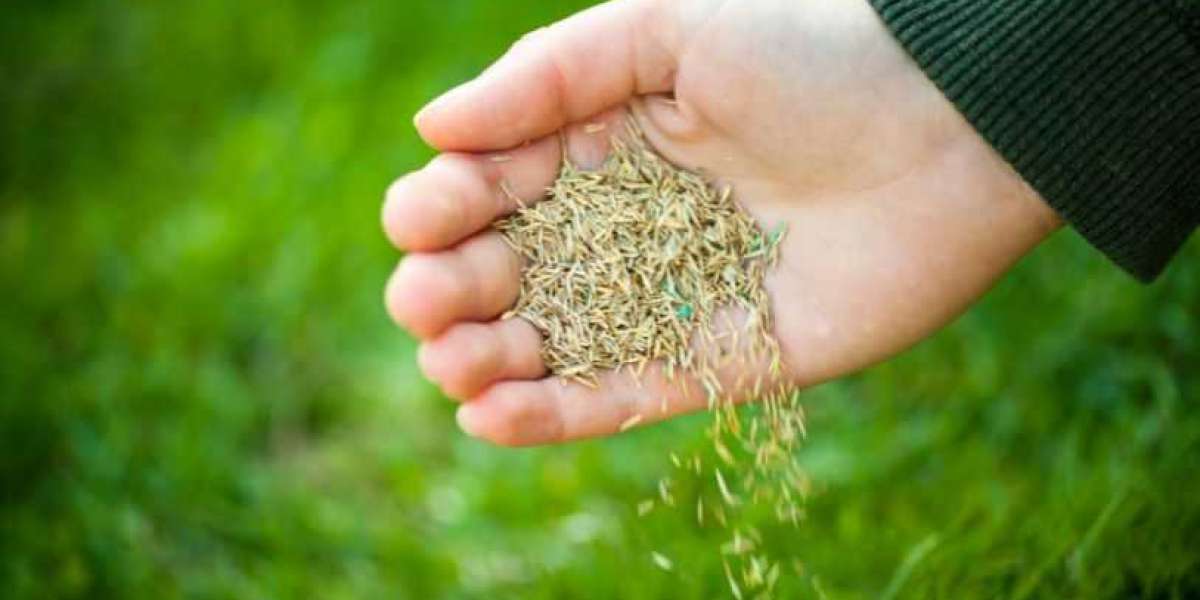Introduction
Spring is the perfect time to breathe new life into your lawn by overseeding —a simple yet highly effective process of adding fresh grass seed to existing turf. Whether your lawn has thin or bare patches from winter stress, heavy foot traffic, or pest damage, overseeding can help restore its density and vibrancy. In this guide, we’ll explore the benefits of overseeding lawns in spring, the best practices for success, and how to achieve a lush, green yard that enhances your outdoor space.
Why Overseed Your Lawn in Spring?
Overseeding offers numerous advantages for your lawn, especially when done in the spring. Here’s why it’s worth considering:
Thicker, Healthier Grass:
- Overseeding fills in thin or bare spots, creating a denser lawn that’s more resistant to weeds and pests.
Improved Resilience:
- New grass varieties introduced through overseeding can enhance your lawn’s ability to withstand heat, drought, and disease.
Enhanced Aesthetics:
- A fuller lawn with vibrant, uniform growth improves curb appeal and creates a welcoming outdoor environment.
Prevention of Soil Erosion:
- Thick grass roots help anchor soil, reducing erosion caused by wind and rain.
Long-Term Benefits:
- Overseeding rejuvenates older lawns, extending their lifespan and reducing the need for costly renovations.
By overseeding in spring, you set the stage for a healthier, more resilient lawn throughout the growing season.
Choosing the Right Grass Seed for Spring Overseeding
Selecting the appropriate grass seed is crucial for successful overseeding. Consider these factors when making your choice:
Grass Type:
- For cool-season grasses (e.g., Kentucky bluegrass, fescue), spring overseeding helps repair winter damage.
- Warm-season grasses (e.g., Bermuda, Zoysia) are typically overseeded in fall but may benefit from patch repairs in spring.
Climate Compatibility:
- Choose seeds suited to your region’s climate and soil conditions for optimal growth.
Seed Quality:
- Look for high-quality, certified seed blends with minimal weed content and high germination rates.
Blended Varieties:
- Mixtures of different grass types can improve disease resistance and adaptability to varying conditions.
By selecting the right seed, you ensure your lawn thrives after overseeding.
Steps for Successful Overseeding in Spring
To achieve the best results, follow these steps for effective overseeding:
Prepare the Lawn:
- Mow your grass slightly shorter than usual to allow seeds better access to the soil.
- Remove debris, leaves, and thatch using a rake or dethatching machine to create a clean surface.
Aerate the Soil:
- Use a core aerator to loosen compacted soil, improving seed-to-soil contact and promoting root growth.
Apply Starter Fertilizer:
- Use a fertilizer high in phosphorus to encourage strong root development in newly seeded areas.
Spread the Seed Evenly:
- Use a broadcast or drop spreader to distribute seeds uniformly across the lawn. Pay extra attention to thin or bare patches.
Water Consistently:
- Keep the soil moist but not saturated to promote germination. Water lightly multiple times a day until seeds sprout, then gradually reduce frequency.
Avoid Traffic:
- Minimize foot traffic on overseeded areas to prevent disturbing newly planted seeds.
By following these steps, you give your lawn the best chance to thrive after overseeding.
Common Mistakes to Avoid
Even with good intentions, mistakes during overseeding can hinder success. Here’s what to avoid:
- Skipping Soil Preparation: Neglecting to dethatch or aerate reduces seed germination rates.
- Using the Wrong Seed: Choosing grass varieties incompatible with your climate or soil type leads to poor growth.
- Overwatering or Underwatering: Too much water can wash away seeds, while too little prevents germination.
- Mowing Too Soon: Cutting new grass before it’s fully established can damage tender blades and roots.
Avoiding these pitfalls ensures a smoother overseeding process.
Benefits of Spring Overseeding
Overseeding your lawn in spring offers several long-term benefits:
Reduced Weed Growth:
- Thick grass crowds out weeds, minimizing the need for herbicides.
Improved Color and Texture:
- Fresh growth enhances the overall appearance of your lawn.
Stronger Root Systems:
- New grass varieties often have deeper, more resilient root systems.
Increased Property Value:
- A lush, well-maintained lawn boosts curb appeal and property value.
These benefits make spring overseeding a worthwhile investment for any homeowner.
Real-Life Success Stories
Many homeowners have seen remarkable results from spring overseeding:
- Case Study 1: Tom revitalized his patchy winter lawn by overseeding with a Kentucky bluegrass blend, achieving a thick, green yard within weeks.
- Case Study 2: Lisa reduced weed infestations significantly by overseeding her thinning fescue lawn, resulting in a healthier, more attractive landscape.
These testimonials highlight the transformative impact of overseeding on lawn health and aesthetics.
Alternatives to Overseeding
If overseeding isn’t feasible, consider these alternatives:
- Sod Installation:
- Lay down pre-grown grass sod for an instant, lush lawn.
- Topdressing:
- Apply a thin layer of compost or topsoil to improve soil quality and support existing grass.
- Weed Control:
- Focus on eliminating weeds to allow existing grass to fill in gaps naturally.
- Fertilization Alone:
- Boost your lawn’s health with a nutrient-rich fertilizer if overseeding isn’t immediately possible.
Your choice will depend on your lawn’s condition and your maintenance preferences.
Conclusion
Overseeding lawns in spring is one of the most effective ways to revitalize your yard and create a lush, green landscape. By choosing the right grass seed, preparing your lawn properly, and following best practices for seeding and care, you can transform thin or damaged turf into a vibrant, healthy lawn. Whether you’re repairing winter wear or simply enhancing your lawn’s density, overseeding sets the foundation for a thriving outdoor space.


